SDGs & NZ Education: reflecting on the Waikato Wellbeing Project.
'Scaling-up' those 'measurable outcomes' for impact investors. How Jacinda's pilot Astroturf project was launched, and how it's doing...
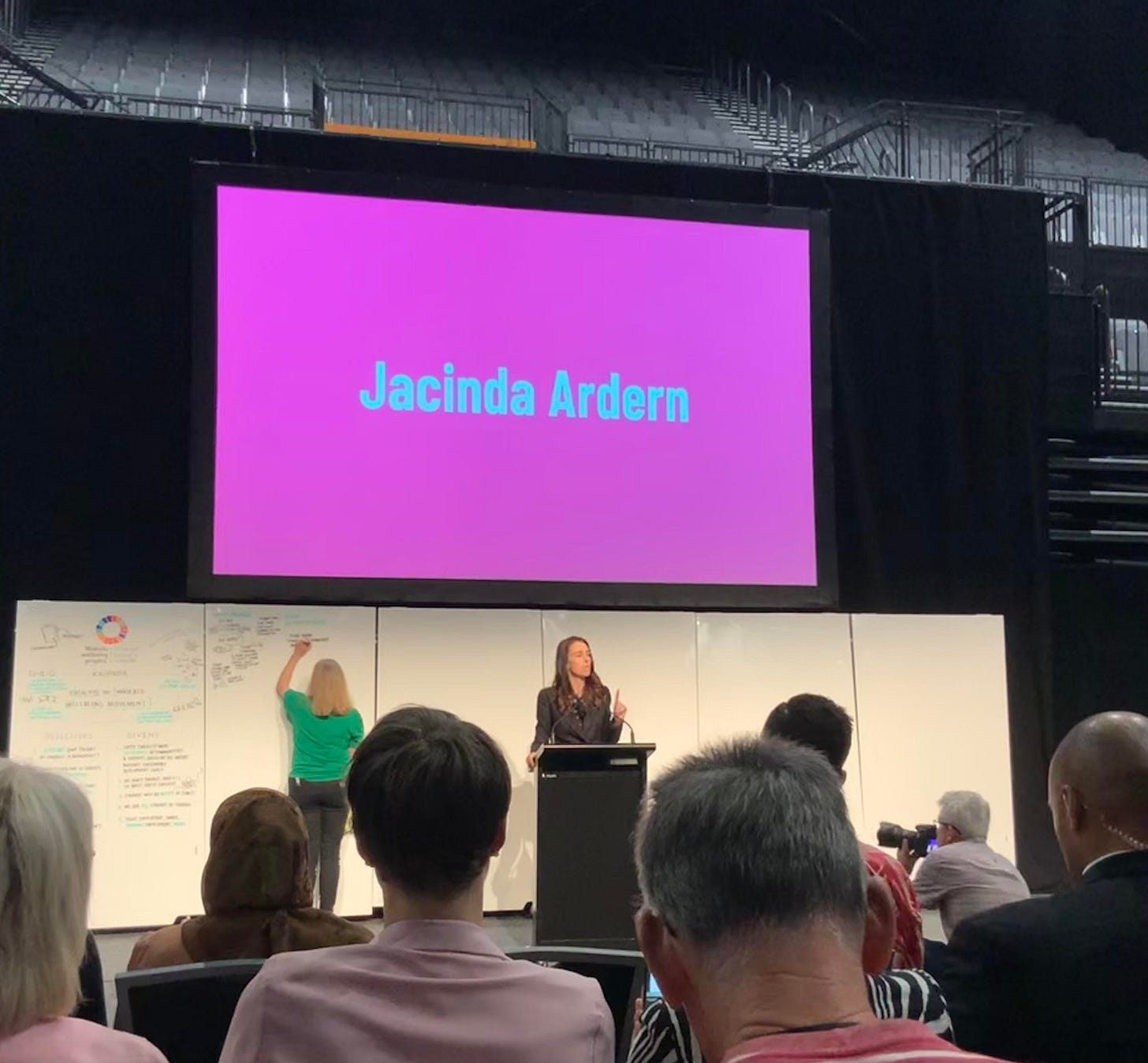
The Sustainable Development Goals that are central to Schwab’s Great Reset Agenda 2030 are in full swing, worldwide. Under a disguise of ‘community-led’ initiatives, these are more than simplistic propaganda. They are strategically-manipulated media messages, or what award-winning investigative journalist, Sharyl Attkisson, back in 2015 called ‘Astroturf’ (if you haven’t already seen this, please do take 10 mins to watch this clip of her prophetic TedX talk) :
Astroturf is happening in a neighbourhood near you, right now. Whether it’s environmental ‘pest control’, a climate action eBike club or something on a grander scale, I urge you to investigate. Your local playschool, hospital, school, environmental group or health clinic will likely be incentivised in some way to promote them.
We must nip them in the bud.
Here is my reflection on a launch event - over 3 years ago - of a local ‘Astroturf’ project, where then-PM Jacinda Ardern flew in, for another moment of limelight in the WEF puppet-show.
Back on the 14th February 2020 - yes, just before the world flipped on its axis and New Zealand’s role in the sinister Five Eyes UN/WEF agenda became clear - I was invited to attend an event. On the face of it, as a freelance educationalist, it was a great networking opportunity. Those of us who genuinely care about our students’ progress into the workplace, have potentially lots to offer: time, (international) insights and valuable skills and resources. The Waikato Wellbeing Project (WWP) was to kick-start the launch of a pilot study towards the New Zealand-wide United Nations initiative, focusing on the diverse learning and health needs of our local community. At last! Many educationalists said.
But…
I’m a sceptic about conferences like these - often there are too many words, not enough action. But as we gathered at the Claudelands Centre in Hamilton, and I was presented with a colourful, glossy conference programme and my name badge, my scepticism lessened: my suspicions grew.
At the Launch Event: Feb 2020
Over 350 delegates from different organisations were invited - this wasn’t a public event. Senior execs from corporates and trustees from charities were represented - alongside those entities in that fuzzy Public Private Partnerships (PPPs) investment arena that stretches across profiting from poverty. Plus some humble (probably bewildered) volunteers. We were all keen to connect-up with each other, to talk about our own expertise and how we could work together to improve the wellbeing of Waikato residents. Initially, the atmosphere was electric. For many of us, this was the first time we had heard of this initiative and we were keen to learn more. But although our expectations were positive, it turned-out participation was NOT what we were assembled to do.
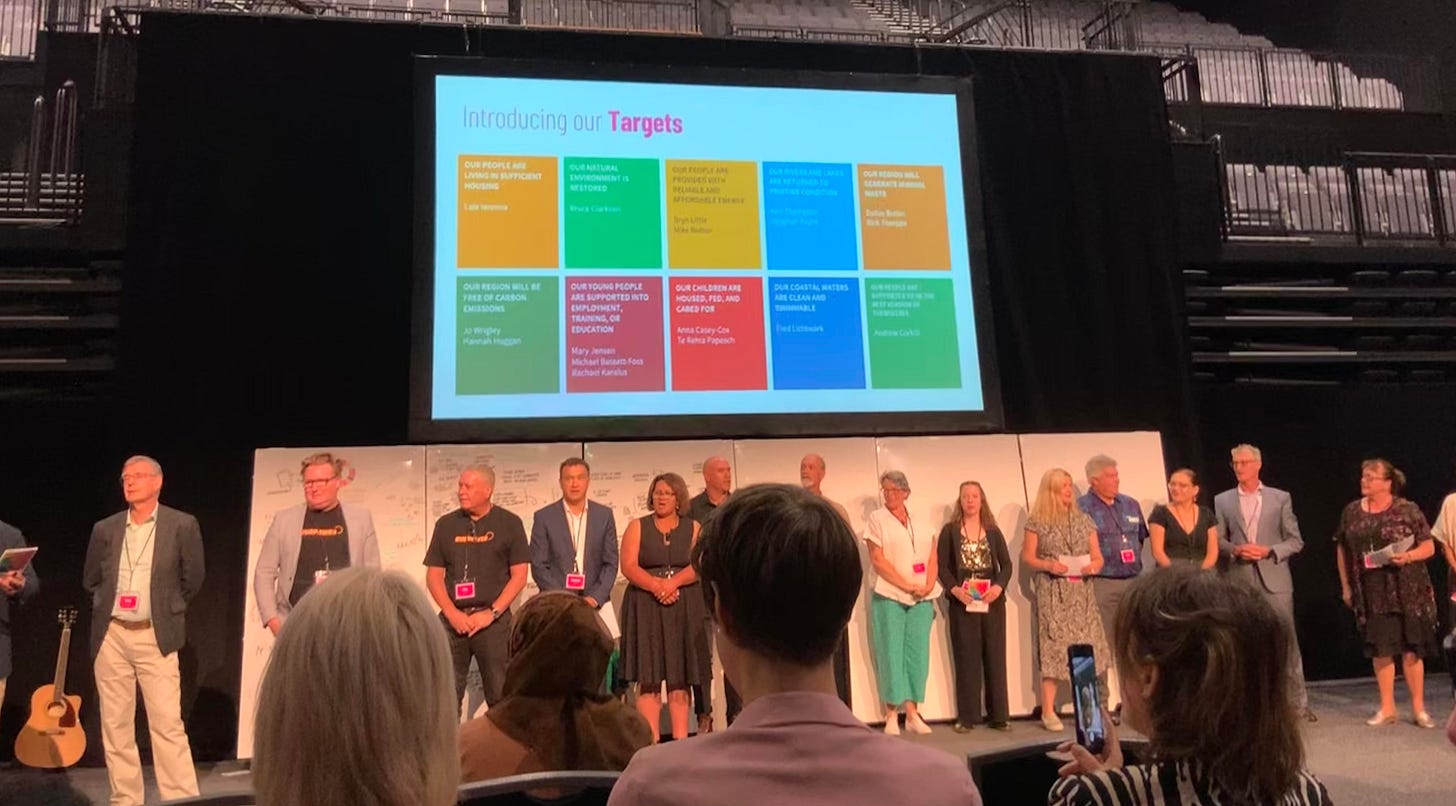
No doubt my readers will be familiar with each of the United Nation’s Agenda 2030 and the associated SDGs. If not, or you want a refresher, there’s a useful interview and article overview at UKColumn News here.
For me, improving education ‘fits’ into the SDGs of developing outcomes and workplace opportunities. I know how toxic Kiwi workplaces can be, especially with Tall Poppy Syndrome so rife, so leadership skills are a priority. Employers need a firm foundation - eg a positive attitude towards professional development is crucial. And the poor quality teachers’ education and training is also an issue that needs addressing (I’m writing a separate post about that for publication soon). But the interpretations of the Waikato’s 10 chosen SDGs seemed out of touch with many of my colleagues’ experiences, and mine too.
Here is the screenshot of the Waikato Wellbeing Project’s interpretation of the SDGs:
Although it says below (from the website) “community-led” - it would seem that the community has simply been instructed what to do, by (WEF?) economists with the SDGs in mind. The aims, strategies and funding had already been decided in advance, as outlined in this launch video here (5 mins):
Grant Robinson MP, featured here, served as Deputy at one point for Ardern. But now, of course, our new Coalition National/NZFirst/ACT Government has no space (or patience) for any Labourites like him.
The outcome of the ‘economists’ stress test’ as described in the above video, produced this:
This video (below) is how the WEF PR machine promoted the WWP launch event that I attended. You’ll notice the thumbnail of the young mother and baby, and the inclusion of children performing a Haka. It’s an effective trick to appear to be pro-diversity and equity. This video also includes a clip from Jacinda’s speech that I took a photo of (posted at the top of this post) (clip = 4 mins):
But the reality of this launch event from 3 years ago was a contrast from the positive spin portrayed in this video.
For instance, here is a photo (below) I took at the ‘arm’ of the SDG event about Waikato’s waterways, which aimed to articulate the plans for making our water catchments drinkable and our waterways swimmable. And let’s be honest - from an educationalists’ perspective, if my students can’t access clean, safe drinking water, can we really be discussing their secondary school exam passes?
It’s worth pointing out to my non-Kiwi readers that New Zealand’s aging infrastructure is in an appalling state. Poor maintenance and corrupt and incompetent local authority leadership leads to regular incidents of raw sewage being pumped out into our harbours, drinking water catchments being contaminated with poisons and pathogens and natural environments like lakes and rivers with high levels of toxic pesticides and farm run-off like nitrates. NZ is definitely NOT the ‘Clean, Green, 100% Pure’ country that the years-old, well-oiled PR machine has led many to believe. For a good overview of this historical problem, start with the work of Meriel Watt’s 1996 book, The Poisoning of New Zealand.
Anyway, to return to the SDG launch event, you’ll see from the photo above that were was no mention of the nature of these kinds of problems - only the existing ‘solutions’. This was the case at all the various SDG boards we were asked to (tokenistically) ‘contribute’ to, with our coloured post-it notes. (WEF: ‘Let’s infantilise our experts before we tell them what we will do without their input’). Understandably, my (highly qualified, experienced) colleagues wanted to explore the Root Cause Analysis of the various problems, before offering the potential solutions included in ‘What’s Underway” and ‘What’s Planned” -pre-prescribed sections. The parameters were too restrictive; our opinions clearly not valued, nor wanted.
Some of us, in acts of what we now fully embrace as peaceful non-compliance, added another ‘column’ to the expensive plastic boards designed to post the post-it-notes onto, with titles such as “What isn’t planned but could be” or “Other options”. Others added the names of colleagues who were mistakenly not invited to the event, but clearly should have been (now I realise, mistakes were NOT made). Curiously, there didn’t seem to be much enthusiasm (or humour) towards our creative improvisations from those tasked with overseeing the participants’ role:
Overall, this cringeworthy exercise reminded me of a poorly-thought-through beginning-teacher assignment - no-one had scaffolded the learning and input to get to the required outcomes. If the aim was to produce outcomes, this task was not fit for purpose.
But maybe the organisers didn’t want any ‘outcomes’? Maybe this was just a performance? I realise now, this was not even a performance to get local experts to engage with the UN Waikato Wellbeing Project; it was a PR assignment. By the end of this day, the PR company would have all the ‘evidence’ necessary to present an ideology to the impact investors behind the curtain. If I am correct, and these experts were brought together under false pretenses, and at great expense, just to tick a marketing box for the PPP investment banks….what a tragedy we witnessed.
Knowing what I know now, I strongly suspect this was a fraud. Our students deserve better than this, and so do we - we are all citizens of New Zealand. We pay our rates and income tax, we deserve respect. We do not expect to be victims of some kind of psyops to obtain fake ‘public consensus’ towards The Great Reset.
Current-day reflections on the WWP
To bring us up-to-date, I checked the Waikato Wellbeing Project SDGs latest progress report from March 2023. Things are unsurprisingly not looking very rosy. Crime rates are up, health expectations are down and education, in terms of retention rates and exam passes are poor and worsening (example from one region below):
The data from 2023 is missing, but if we look at other sources, it’s clear that the educational standards in NZ - which were already way below our international peers - is shockingly bad.
This data isn’t surprising really, when the WWP was not formulated by and for the people of New Zealand, and began in the covid era, when Government-applied anti-scientific and unethical policies deliberately exacerbated existing inequalities. The WWP reports make very depressing reading, even when they are filtered through the positive PR spin. Will the investors fall for it?
Follow the Money
I asked ‘Tui’, the Waikato Wellbeing Project’s ChatBot, to tell us the funders of the project, it responded:
The Waikato Wellbeing Project is a regional initiative that collaborates with community leaders and works in partnership to achieve shared goals. However, the specific funding sources for the project are not explicitly stated on the website. For detailed information about the project's funding, I would recommend reaching out to the organization directly.
The Waikato Wellbeing Project is supported by several funding partners, including Trust Waikato, Waikato Regional Council, and Wel Energy Trust, among others. These partnerships are crucial for the project's development and implementation.
The WEL Energy Trust is a funding partner for the Waikato Wellbeing Project. The Trust is a community-owned organisation based in the Waikato region of New Zealand. It owns 100% of the shares in WEL Networks Ltd, the local electricity distribution company. The Trust uses the dividends it receives from WEL Networks to provide funding for community projects and initiatives.
Interesting. Now I’m already familiar with the circular nature of the funding of (pseudo) charities in New Zealand. If you’re interested in that subject, I’d suggest you start with this excellent article about a specific NZ ‘charity’ by Dr Michael Gousmett here. So I was interested in looking at WEL Networks Ltd, which is an electricity company and has an PPP of ‘sustainable development’ as a charity in this project. This context is explained on the WEL Network Trusts website:
The Trust itself I can’t find listed in the register of NZ Charities - odd. The ‘Trustees’ listed, who include a very woke Labour MP Jamie Strange, cannot be linked to a Trust either. I will investigate further when I have time.
But perhaps more relevant for us here is the Smart Co Ltd smart meter company of which WEL Networks Trust is a 15% shareholder. Smartco state:
We are a joint venture company serving more than 250,000 urban and rural consumers across New Zealand. Our shareholders include Alpine Energy, Counties Power, Electricity Invercargill, Network Tasman, On Metering, The Power Company and WEL Networks.
Covering all of New Zealand, Smart Co have a data harvesting arm called Hiko, which…
…delivers highly enriched ICP data, insights and an ‘out of the box’ DIGITAL TWIN solution for effectively managing New Zealand’s low voltage energy networks.
Oh dear, I see that WEF/UN SDG terminology again in ‘digital twin’ technology,a useful virtual reality for modelling concepts like 15-minute-cities. A quick look at Hiko’s website and you see the potential value of their surveillance and monitoring of (energy) data in providing the SDG scalable measurables - and inevitably controlling them:
Conclusion
I’ve outlined here my initial impressions and more recent learnings of the local SDG project to me - Waikato Wellbeing. I can see now how these Astroturf project are spun by this PR experts and Nudge Units. They form the fake ‘problems’ that very specific commercial companies, Gov and PPPs have been invited to ‘measure’ and then ‘solve’. I have also pointed out the ways that the data for these kinds of scalable projects is skewed by the conflicts of interest and flawed methodologies of analysis.
These are not community-led initiatives. They are PR for impact investment vehicles.
What is your local SDG project and who is controlling and funding it? How are the ‘outcomes’ being reported and how can we work to demolish these fake top-down initiatives? How can our new parallel communities learn from these projects - and be more authentic in our approach, engagement and outcomes?




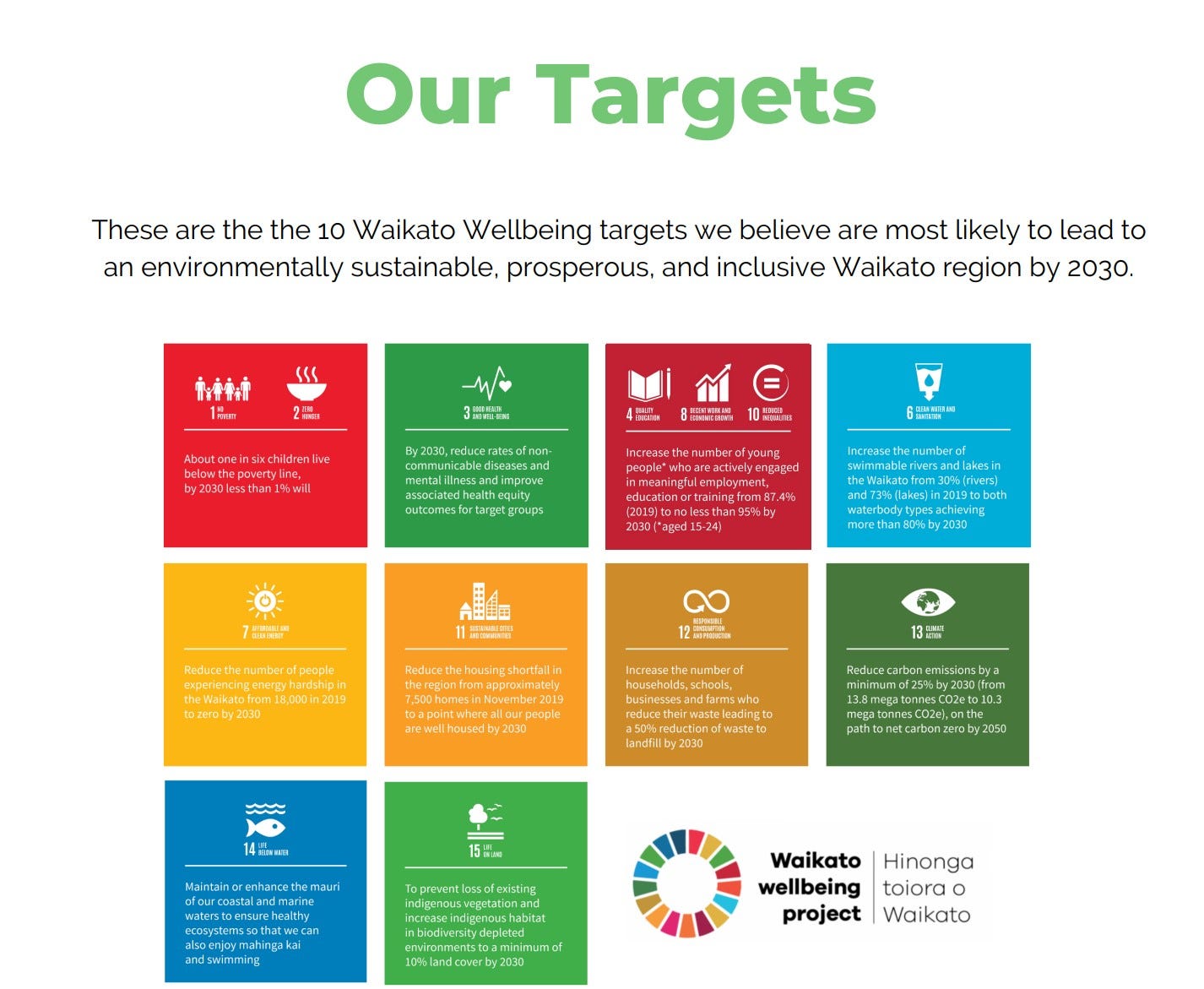
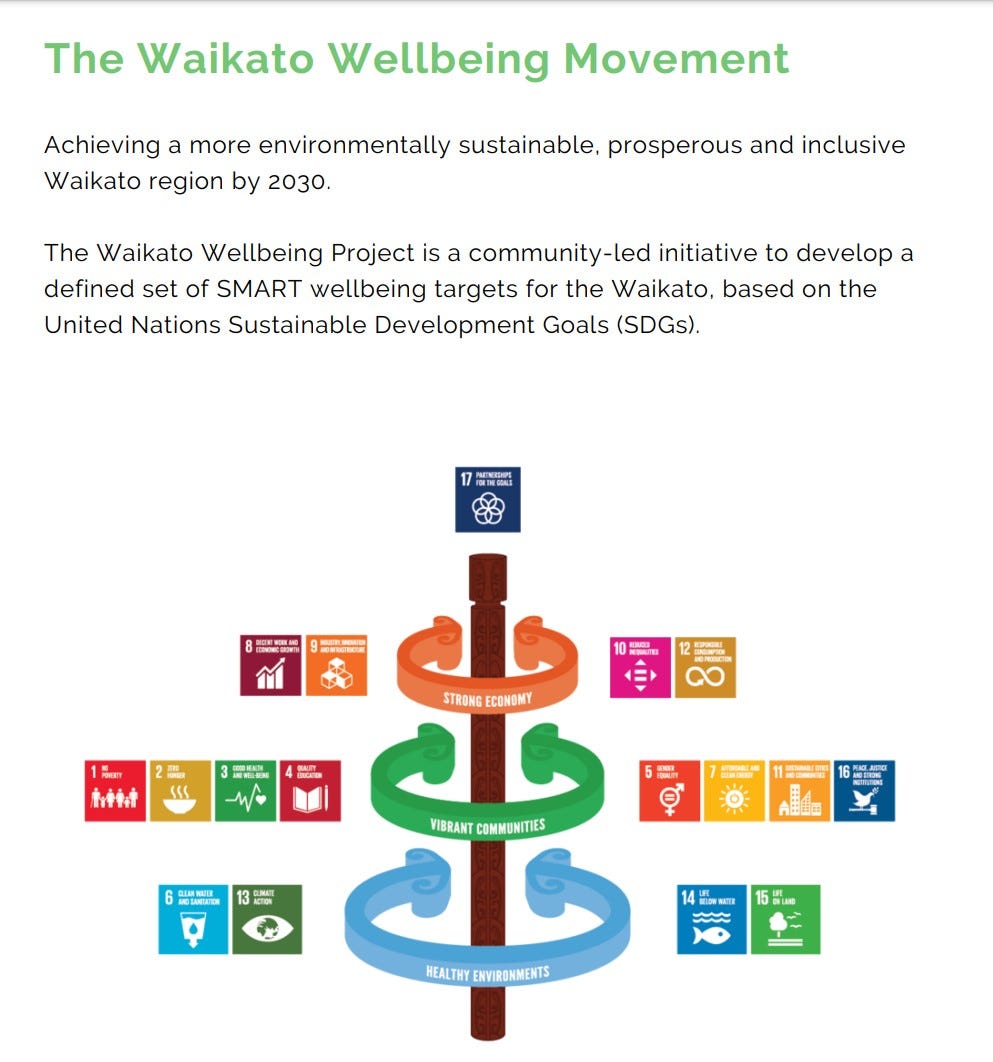
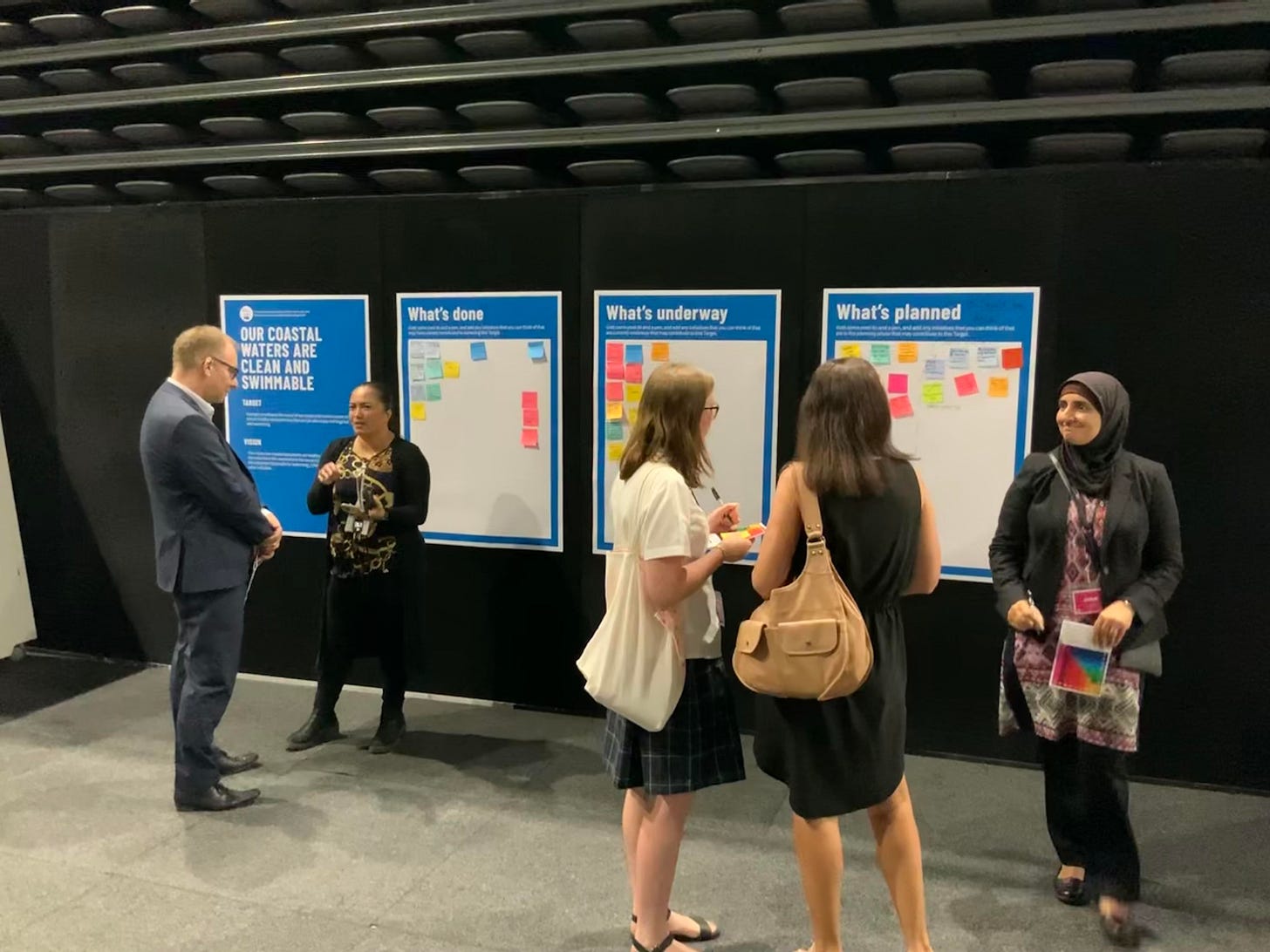

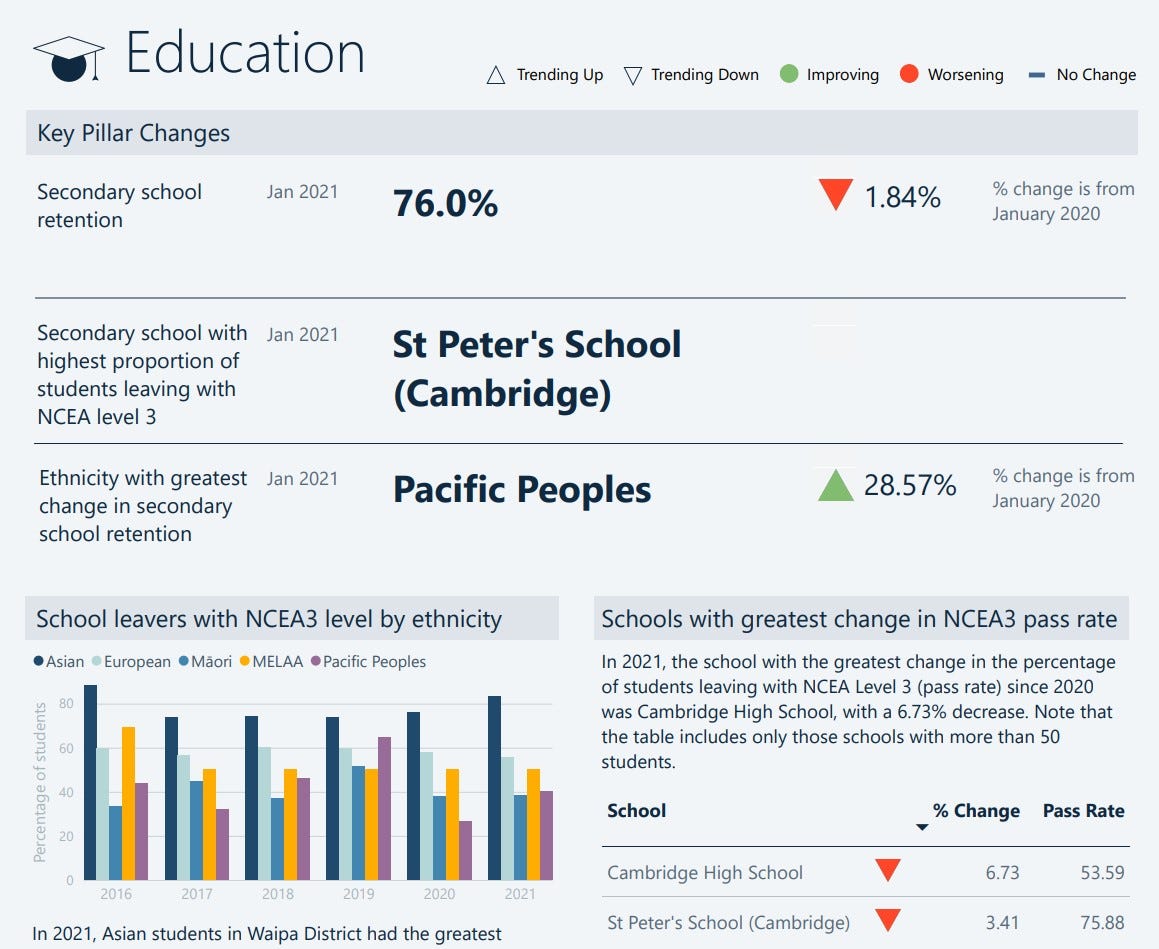
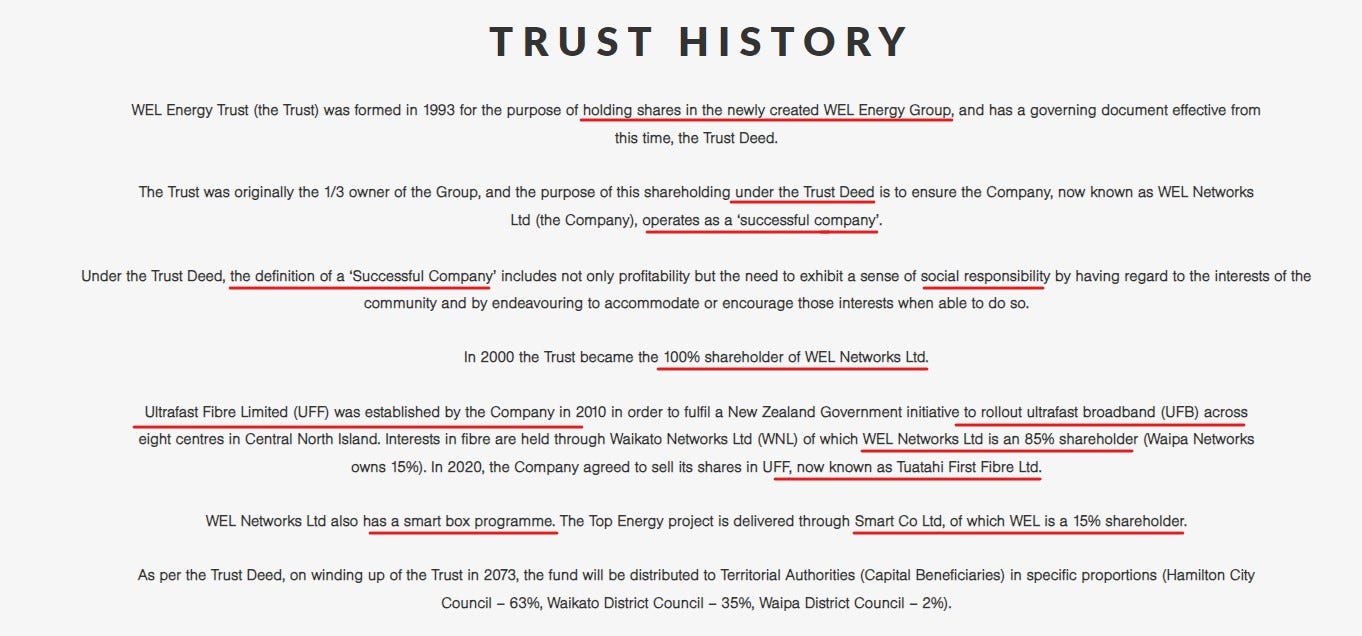
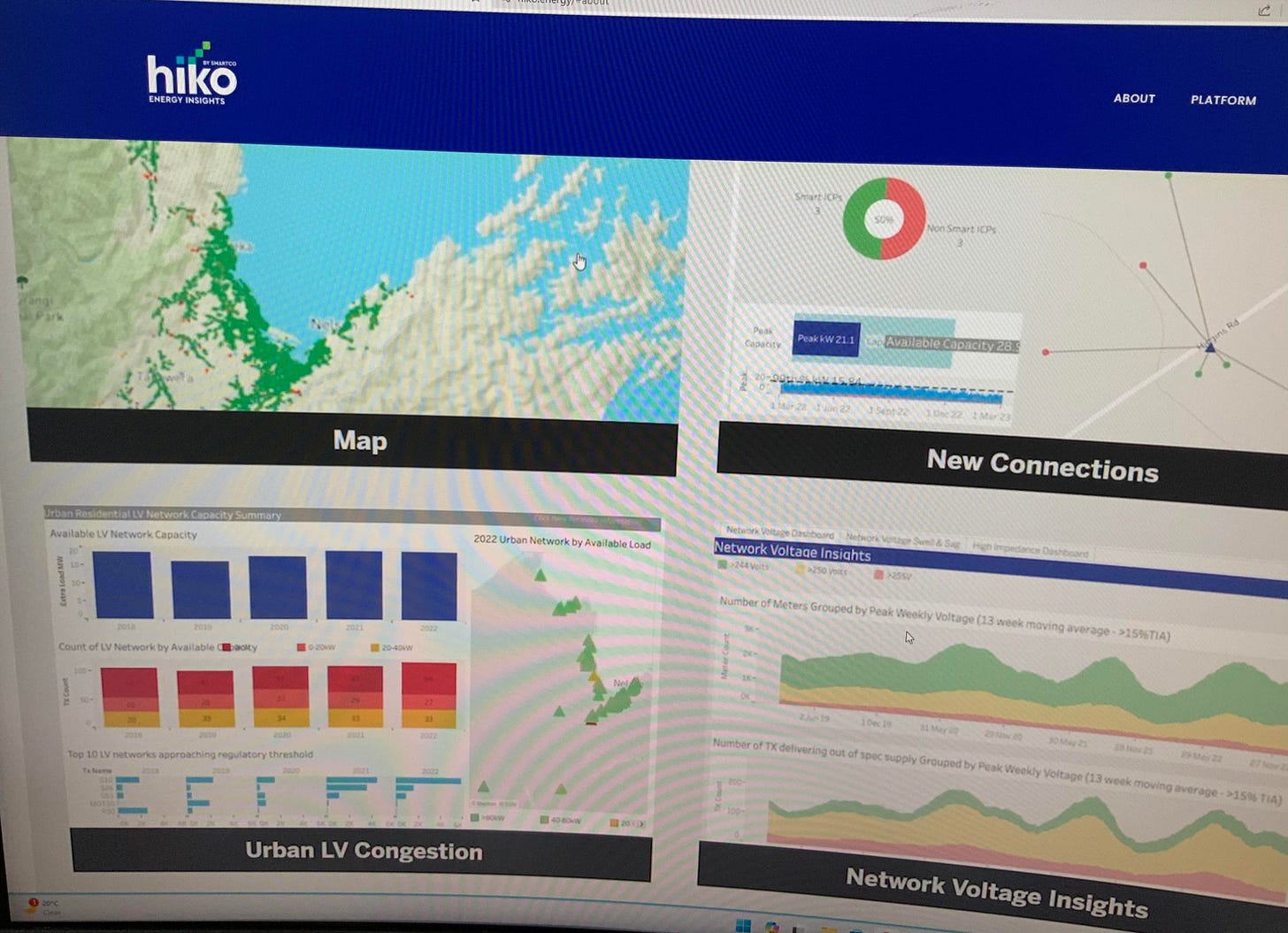
Thank you Ursula. Its at this level that people need to take control back.
Lot's of this essay resonated. As I'm reading I'm thinking "this is ripe for the Delphi method" and sure enough...then as I'm reading on further I'm thinking about corrupt charities...and sure enough. Dreadful people who push this corruption.Thanks.